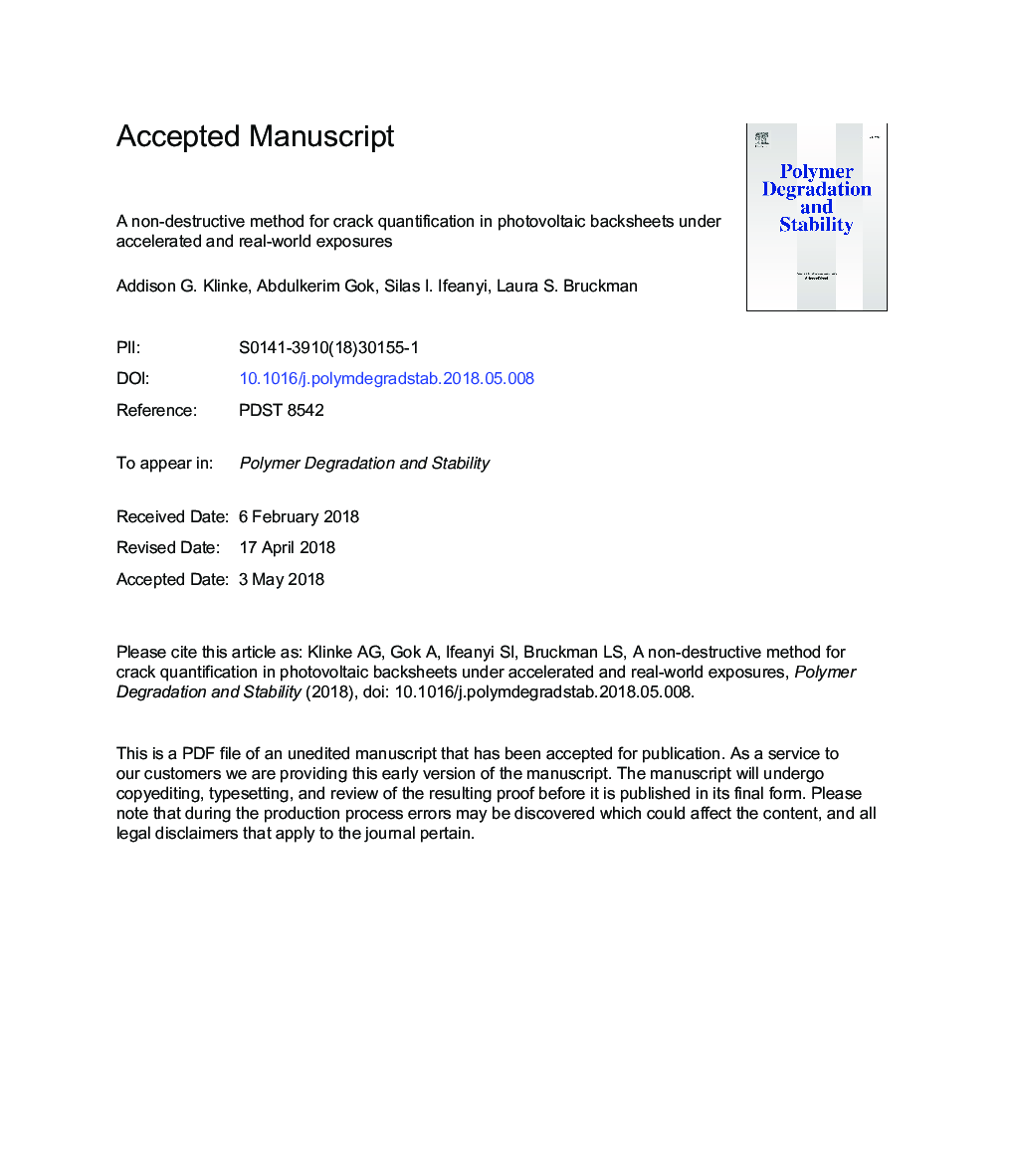| کد مقاله | کد نشریه | سال انتشار | مقاله انگلیسی | نسخه تمام متن |
|---|---|---|---|---|
| 7823996 | 1502860 | 2018 | 27 صفحه PDF | دانلود رایگان |
عنوان انگلیسی مقاله ISI
A non-destructive method for crack quantification in photovoltaic backsheets under accelerated and real-world exposures
ترجمه فارسی عنوان
یک روش غیر مخرب برای اندازه گیری تراکم در صفحات فتوولتائیک تحت تأثیرات شتاب و واقعی در جهان
دانلود مقاله + سفارش ترجمه
دانلود مقاله ISI انگلیسی
رایگان برای ایرانیان
کلمات کلیدی
فتوولتائیک، برگه ترک خوردن، علم اطلاعات، مدل های پیش بینی کننده طول عمر، علم تخریب،
موضوعات مرتبط
مهندسی و علوم پایه
شیمی
شیمی آلی
چکیده انگلیسی
The long-term durability of photovoltaic modules is paramount for the continued growth of the industry. Polymer backsheets are of particular concern since they provide electrical insulation and an environmental barrier. In this study, 23 freestanding, multilayer backsheets with nine unique material combinations underwent four different weathering exposures under accelerated and real-world conditions. Besides changes in color and gloss, the induced degradation included parallel or mudflat cracks on 11 backsheets, sometimes in combination with delamination or blistering. Similar degradation has been observed in previous studies and is concerning since cracks compromise the mechanical integrity and electrical safety of backsheets. Quantitative parameters are desirable to reliably classify categories of cracks and supply unbiased features for statistical analysis in predictive lifetime models. We developed an analysis technique that utilizes surface profilometry data to quantify the depth, width, area, spacing, and number of cracks. Parameters are automatically extracted from the raw data by an algorithm running on a high performance distributed computing cluster. Our algorithm excelled at characterizing parallel cracks with minimal de-adhesion, and only an estimated 4% of crack detections were false positives. The addition of humidity and temperature variation formed up to three times as many cracks on a photodose basis compared to dry, constant temperature exposures. Cracks in real-world and accelerated exposures propagated to similar depths with equivalent photodoses; however, the number of cracks formed in accelerated exposures was far greater on a photodose basis. Of samples that cracked, the best performing backsheet configuration was polyvinyl fluoride/poly (ethylene-terephthalate)/polyethylene (PVF/PET/PE) while the least durable was PET/PET/ethylene-vinyl acetate. None of the six PVF/PET/PVF backsheets cracked in any of the exposures.
ناشر
Database: Elsevier - ScienceDirect (ساینس دایرکت)
Journal: Polymer Degradation and Stability - Volume 153, July 2018, Pages 244-254
Journal: Polymer Degradation and Stability - Volume 153, July 2018, Pages 244-254
نویسندگان
Addison G. Klinke, Abdulkerim Gok, Silas I. Ifeanyi, Laura S. Bruckman,
